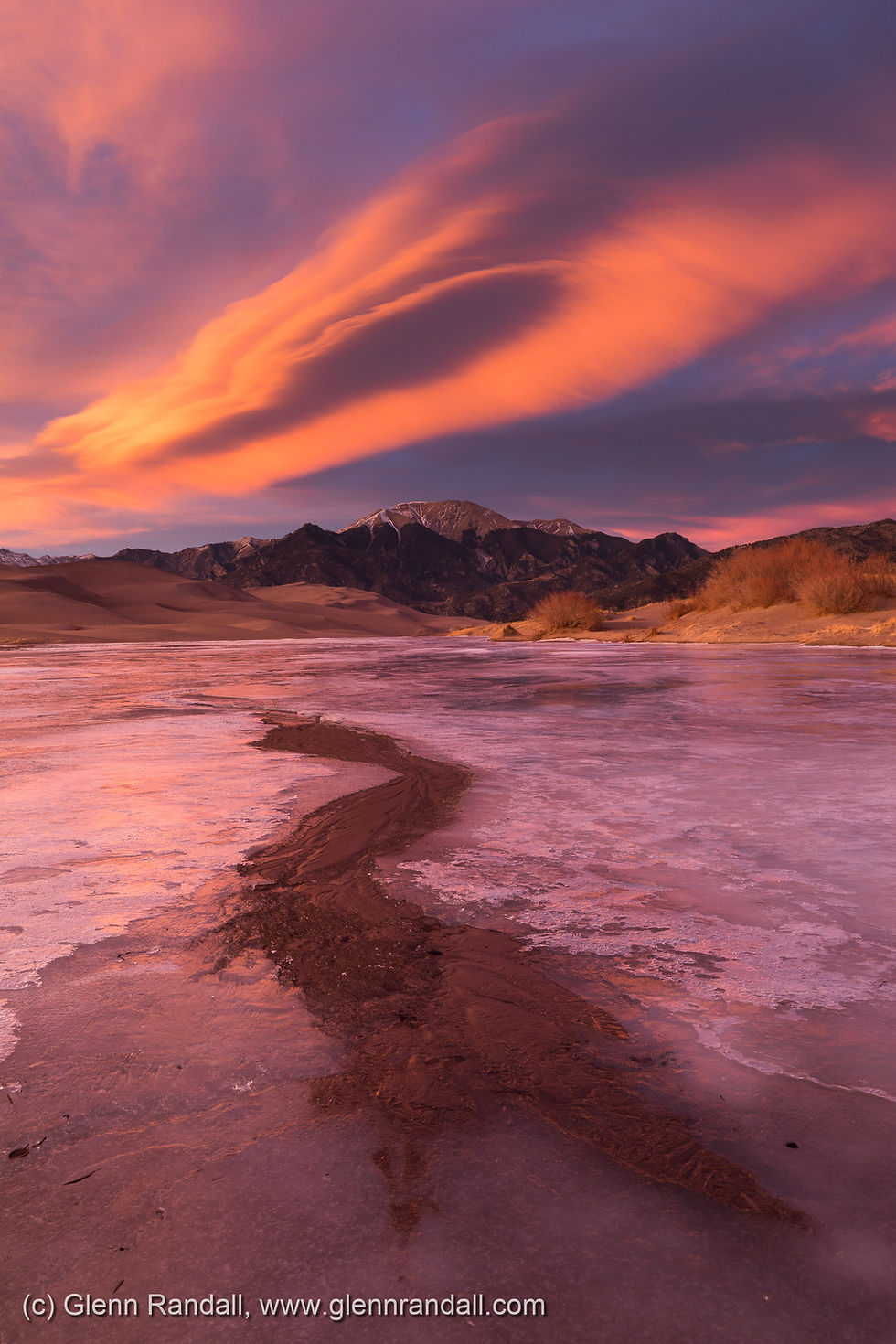Border Patrols and Background Checks

A wise photographer once observed that the $10 photographer sees a scene he likes and takes the picture. The $100 photographer sees the scene, steps three feet to the left, and takes the picture. The $1,000 photographer sees the scene, steps three feet to the left, steps one foot back to the right, and takes the picture. Selecting the right camera position is that critical. In fact, sometimes moving the camera just an inch or two can significantly improve the composition of a grand landscape if some elements within the frame are close to the lens. Precise compositions—those in which a small movement of the camera produces a significant change in the composition—are often pleasing because the photograph seems like a carefully considered record of a particular place, rather than a generic image that could have been made anywhere within a hundred-yard radius.

To compose precisely, you must pay attention to two things: the relationship of each part of your subject to the edge of the frame, and the relationship of each part of the subject to every other part as well as the background. Or, to put it more pithily, you must do border patrols and background checks.

By border patrols, I mean you must run your eye around every edge of your frame, every time. Our visual system has a tremendous capacity for selective attention. We see what we pay attention to. It’s all too easy to concentrate so hard on the main subject that we overlook stray elements, like sticks, branches, or blades of grass, poking into the edge of the frame. Equally important is the relationship of the subject to the edge of the frame. Important parts of the subject deserve room to breathe, which means they should not be crowded up against the edge of the frame, or, worse yet, just barely touching the edge. Too much space between the edge of the frame and the main subject, however, makes the composition seem loose and unfocused, metaphorically speaking. Often the impact of such an image can be increased by judicious cropping to focus the viewer’s attention on the main subject, which gains impact by becoming more dominant within the frame.

In many great photos, of course, the main subject continues beyond the border of the frame. Here the key is that the composition looks intentional. Either include the subject cleanly, like you planned it that way, or cut off a portion of it cleanly, again so it looks planned.

By background checks I mean, first and foremost, the relationship of the foreground to the background. Your eyes see depth so effortlessly in real life that you immediately grasp that the blade of grass is actually a foot beyond the flower. In a photograph, however, that blade of grass may well look like it is growing directly out of the flower. With a little experience, avoiding such beginner mistakes will be easy, and you can concentrate on the more subtle aspects of the relationship of foreground elements to background elements, and the relationship of foreground elements to each other. Remember that you are responsible for every square millimeter of your frame. Do you want the top of that tree, flower, or boulder to break the skyline, or fall below it? How much sky do you want to see between the horizon and the lowest limb of the tree projecting above the horizon? Precisely how high should the camera be above the ground to provide the optimum balance of density and breadth when shooting a field of wildflowers? Too high, and the field looks broad (that’s good), but sparse, with lots of greenery visible in between each blossom (not so good). Too low, and the field looks dense, with all the blooms stacked up behind one another (that’s good), but too small, occupying only a small portion of the frame (not so good).

This attention to every last detail of your composition is one of the keys to growing as a landscape photographer. Your viewers may not be able to consciously describe why they find your images appealing, but they will sense the strength of your design. When it comes to composition, precision is pleasing.

Want to know when new blog posts are released? Please join my mailing list!
Want to learn more? Get information on the private and group landscape photography workshops I teach.


Kaiser OTC benefits provide members with discounts on over-the-counter medications, vitamins, and health essentials, promoting better health management and cost-effective wellness solutions.
Obituaries near me help you find recent death notices, providing information about funeral services, memorials, and tributes for loved ones in your area.
is traveluro legit? Many users have had mixed experiences with the platform, so it's important to read reviews and verify deals before booking.
California Labor Code 210 holds an employer liable for a delay in payment and, accordingly, punishes an employer for failing to pay one's wages in a timely manner. The code prevents wage theft when employees do not get paid on time, including overtime, and provides penalties for every late payment. This is a very crucial regulation, especially in those industries where overtime is very high, ensuring equity in terms of payment for hours worked. More information can be obtained at https://consumerattorneys.com/article/labor-code-210.